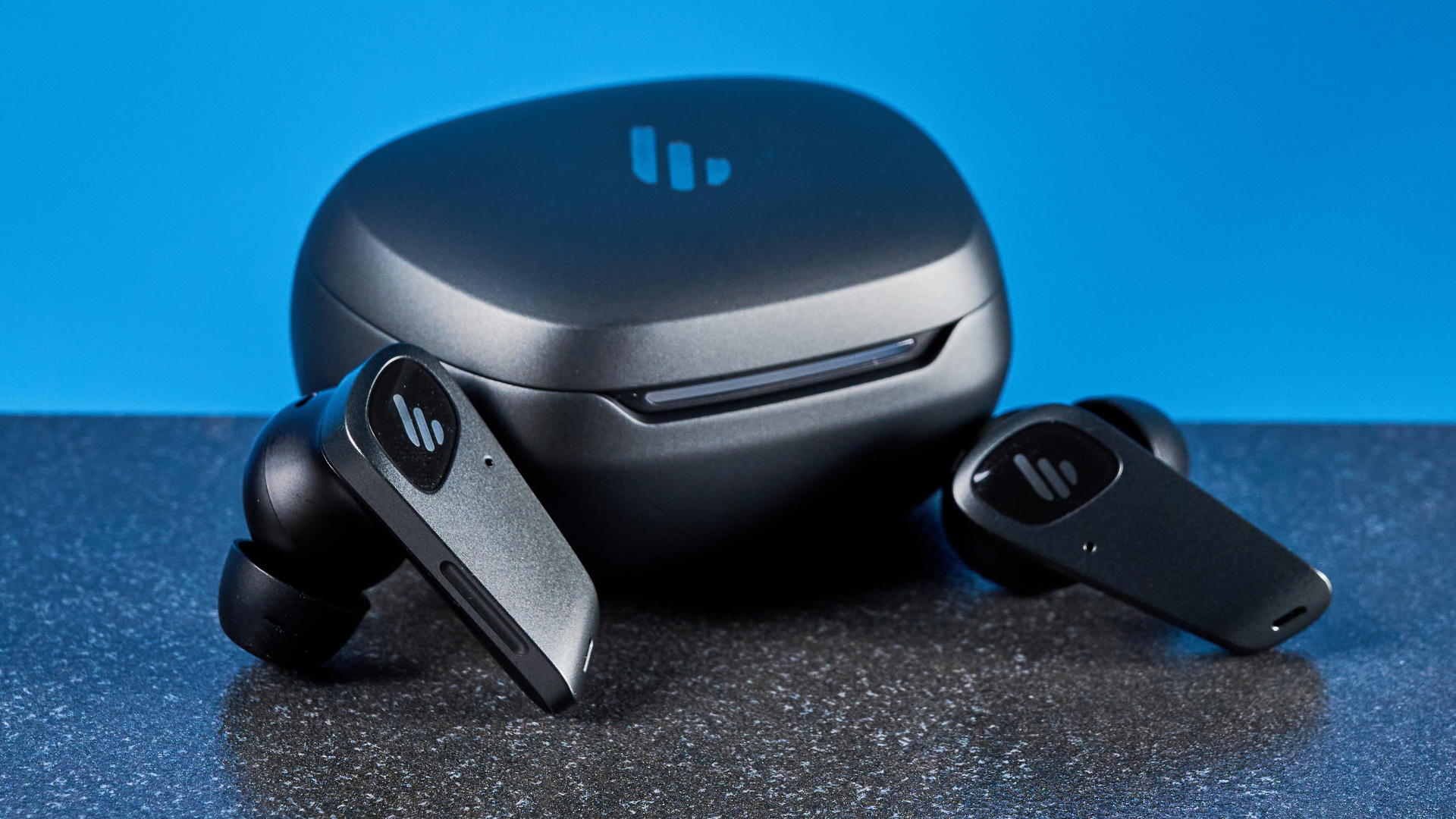7 Most Surprising Things About the Samsung Galaxy Fold (Good and Bad)
The Galaxy Fold is a totally new kind of smartphone, and with that comes some discoveries that are pleasant and not so pleasant.
Update April 18 6:27 am ET: There have been multiple reports of the Galaxy Fold screen breaking or malfunctioning from early reviewers. Samsung says that it is investigating the reports.
The Galaxy Fold isn’t just another flagship for Samsung. It’s the start of a whole new foldable phone category. From the Fold’s advanced hinge and huge 7.3-inch screen to its sky-high $2,000 price, there’s a lot of intrigue around this device.
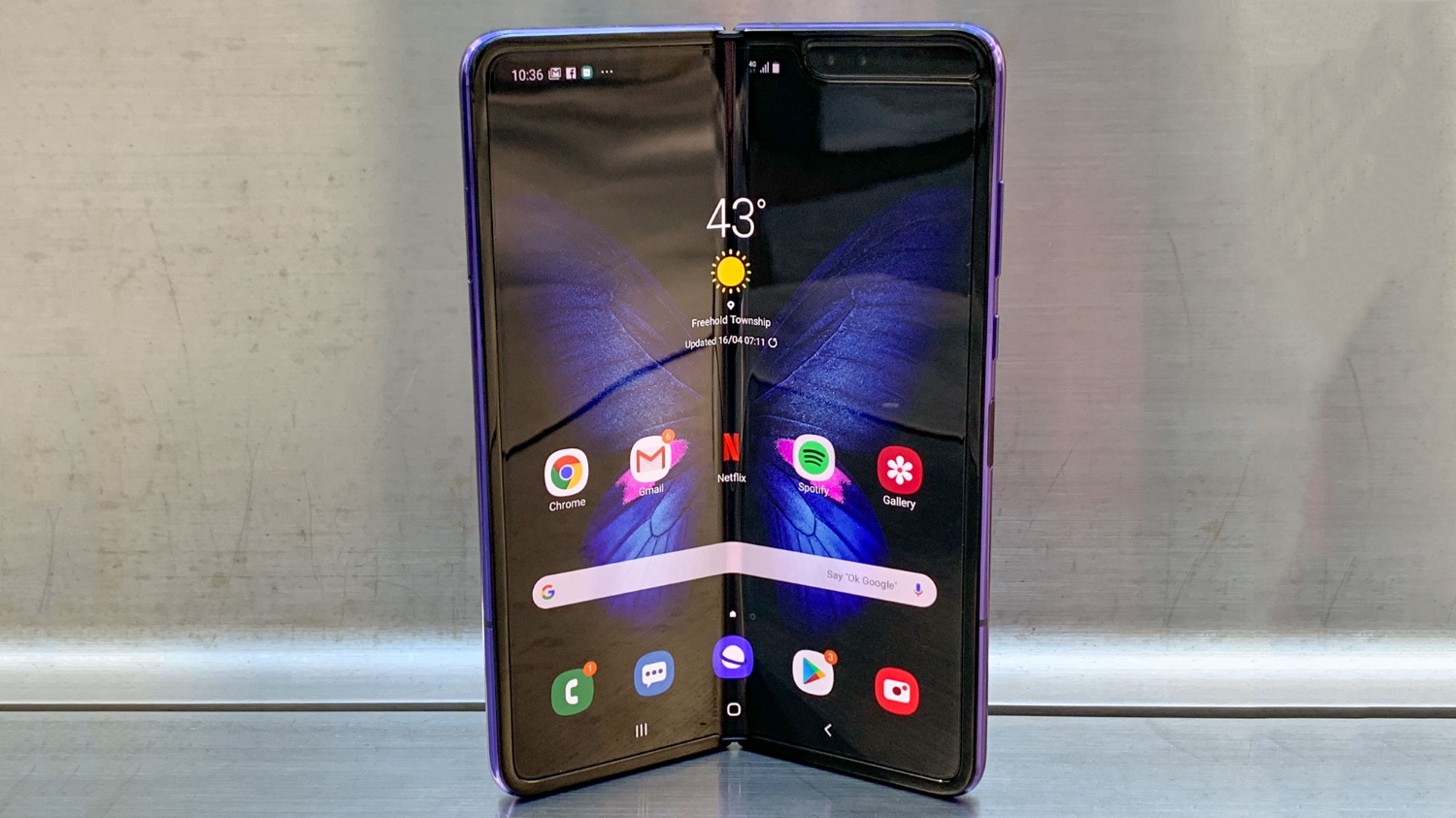
We’re in the middle of testing for our full Galaxy Fold review, and these are the most surprising things so far — for better and for worse.
1. The foldable design feels shockingly natural for a first-time product
This may be Samsung’s first foldable phone, but you can tell the company has been working on it for several years. When you open the phone slightly, you can feel a slight amount of tension from the dual-axis hinge with interlocking gears. And when you close the phone, there’s a reassuring and satisfying click. It’s just really well made.
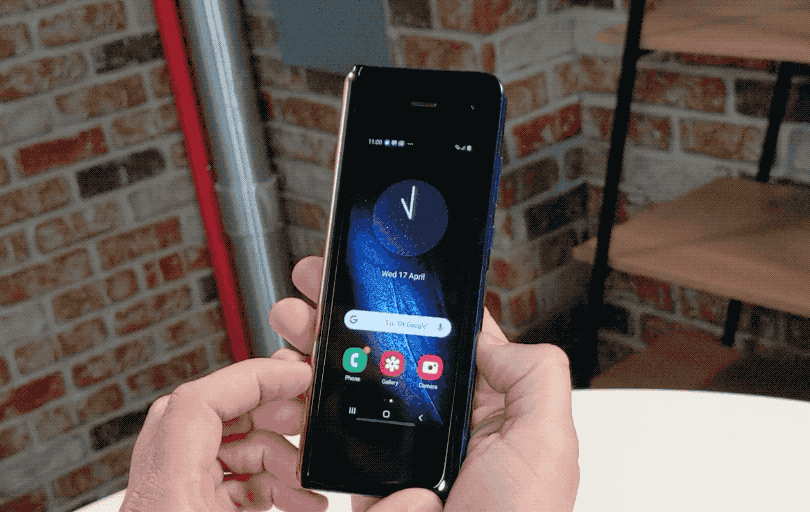
I have just one suggestion for Samsung: create a small lip for opening the phone, similar to what you’d find on a laptop. Right now I have to dig my nails a bit between the two edges to pry the clamshell open.
2. Apps don’t keep running when you close the display, unless you make them
The App Continuity feature comes in very handy on the Galaxy Fold, but it could be more intuitive. I like that when you’re using an app on the front screen — say viewing an email or Google Maps — and then you unfold the device, it instantly pops up on the big screen so you can pick up where you left off. It’s seamless.
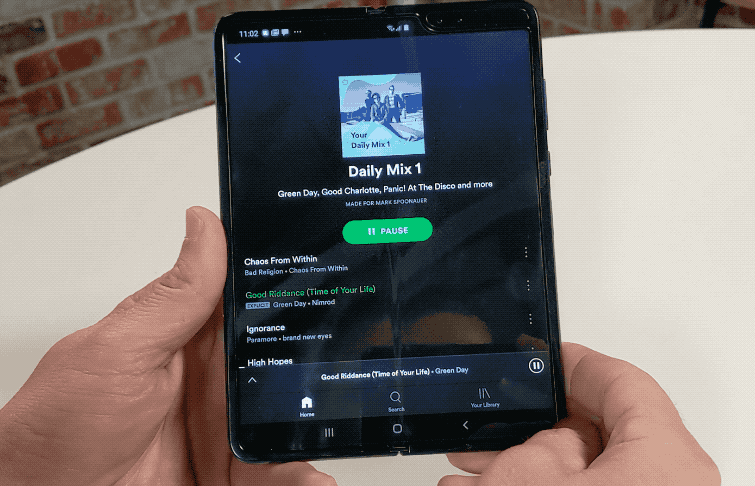
Not so much in the other direction, though. By default, the Galaxy Fold simply shows its always-on display with the time and date. If you want to keep using an app when you close the phone you need to manually select it under Display settings where it says “Continue apps on front screen.” So far I’ve marked Gmail and Spotify, but I think Samsung should go even further and allow all apps to continue on the front screen with a simple toggle.
3. I’m using my laptop a little less
Phone are fine for most tasks, but I typically turn to my laptop for reviewing larger documents or tweaking articles in the Tom’s Guide content management system (CMS). But with the Fold in my pocket, I find myself opening my MacBook Pro less, and not just because you can run three apps on the Fold’s screen at once.
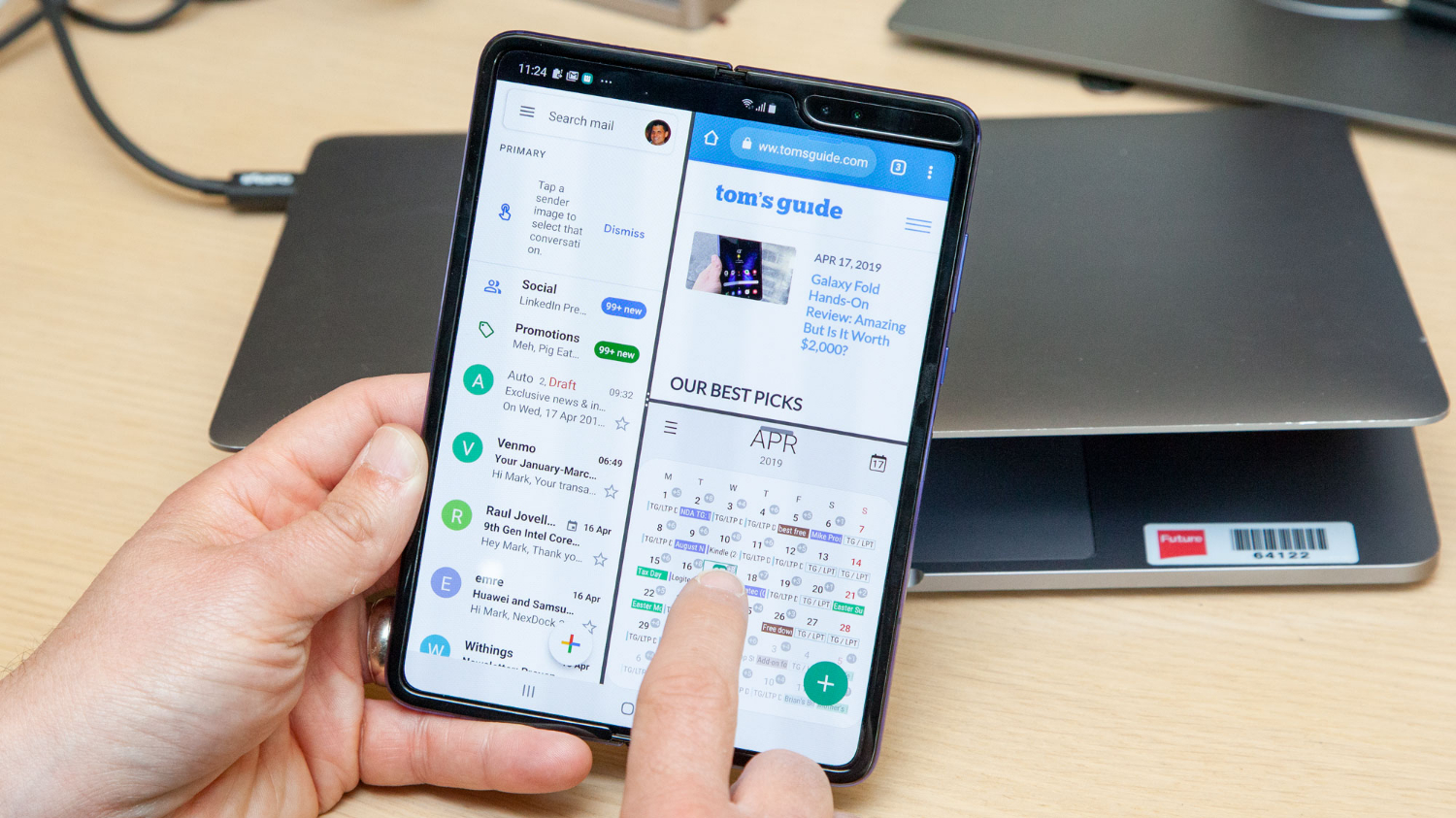
With 7.3 inches of real estate, the canvas is simply bigger and wider than any smartphone. That means I can easily view PDFs on the go and make quick edits to stories without having to touch my laptop.
4. The battery life is strong with this one
With a 4,380 mAh battery, the Galaxy Fold has one of the biggest batteries you’ll find in a phone, short of the 5,000 mAH Moto G7 Power. But this pack has a lot more screen to supply juice to, so I was worried that I’d be hunting for an outlet by 3 p.m. each day.
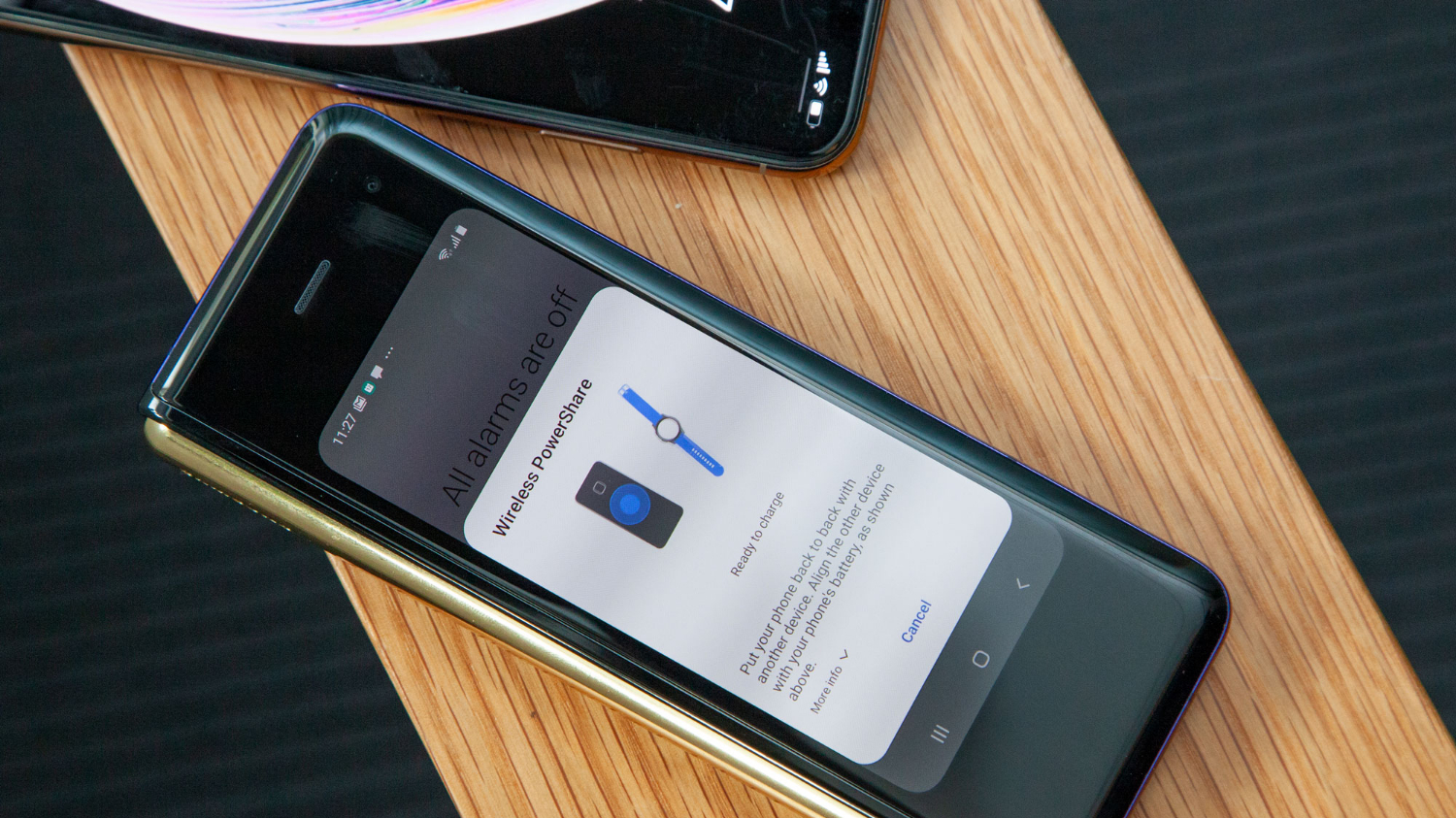
I’m happy to report that so far the Fold is providing strong endurance. After unplugging the phone yesterday at 6:30 a.m. and using the device intermittently throughout the day for snapping photos, playing games, checking email and even charging my iPhone XS with the Fold’s Wireless PowerShare feature, the battery was down to 60 percent as of 9:15 p.m. We’ll have to see whether the final U.S. version makes it to our list of longest lasting smartphones after we run a formal battery test.
5. You can’t swipe down from the top right of the screen to access quick settings, but there’s a workaround
Whether I’m looking to change the brightness on a phone’s screen or activate Wireless PowerShare, I tend to use the Quick Settings menu on Samsung phones a lot. So I was bummed to discover that you can’t activate that menu when sliding your finger down from the top right portion of the Fold’s display, where the notch is for the camera.
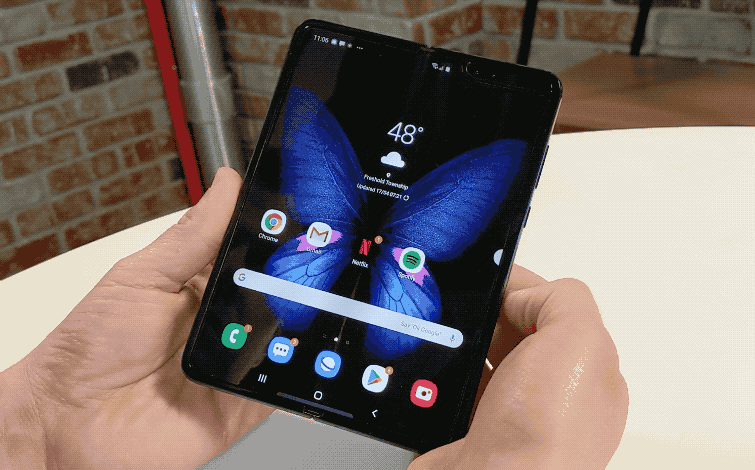
You can swipe from the middle of the screen, but on such a large-screen phone that can be a little awkward. Another option is to turn on Finger Sensor gestures under Advanced gestures. You can then use your thumb to swipe up and down on the fingerprint sensor to bring the notification panel and quick settings menu up and down. However, I find that I have to be careful not to accidentally brush up against this button.
6. Taking pictures is immersive (and a little awkward)
Yes, you can use the tiny front screen for snapping quick shots with the Galaxy Fold, but unless you have really, really good vision, it can be hard to preview your pics using the tiny 4.6-inch screen.
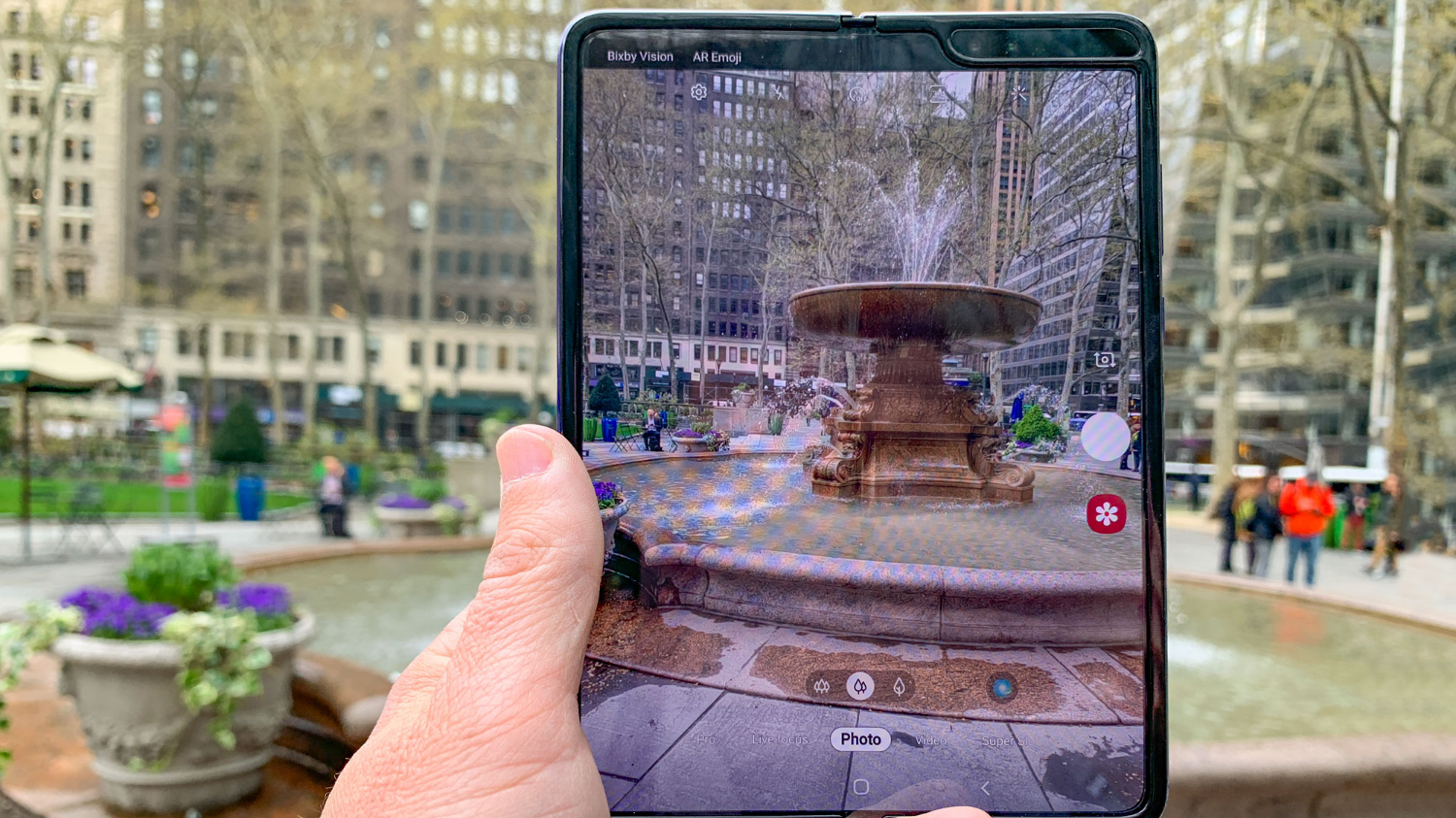
That means turning to the 7.3-inch panel to snap photos, which gives you a much better live preview than most phones, especially when you’re trying to see how well the bokeh effect is going to turn out with the Live Focus feature. There’s a much better chance you’ll get a good photo without multiple retakes.
MORE: Best Camera Phones
By default the Galaxy Fold takes square images and will only do landscape orientation shots if you turn the phone in your hands horizontally. It’s just one extra step if you want to get more of the scene in the frame, but it’s a little annoying.
7. Yup, the Bixby button can be reprogrammed
I really think Samsung should shift gears away from Bixby and let Google Assistant take the wheel. But in the meantime, there is a way to make the Bixby button on the Galaxy Fold (which doubles as the fingerprint reader) do other things, just like there is for the Galaxy S10 (or any phone running Samsung’s OneUI interface).
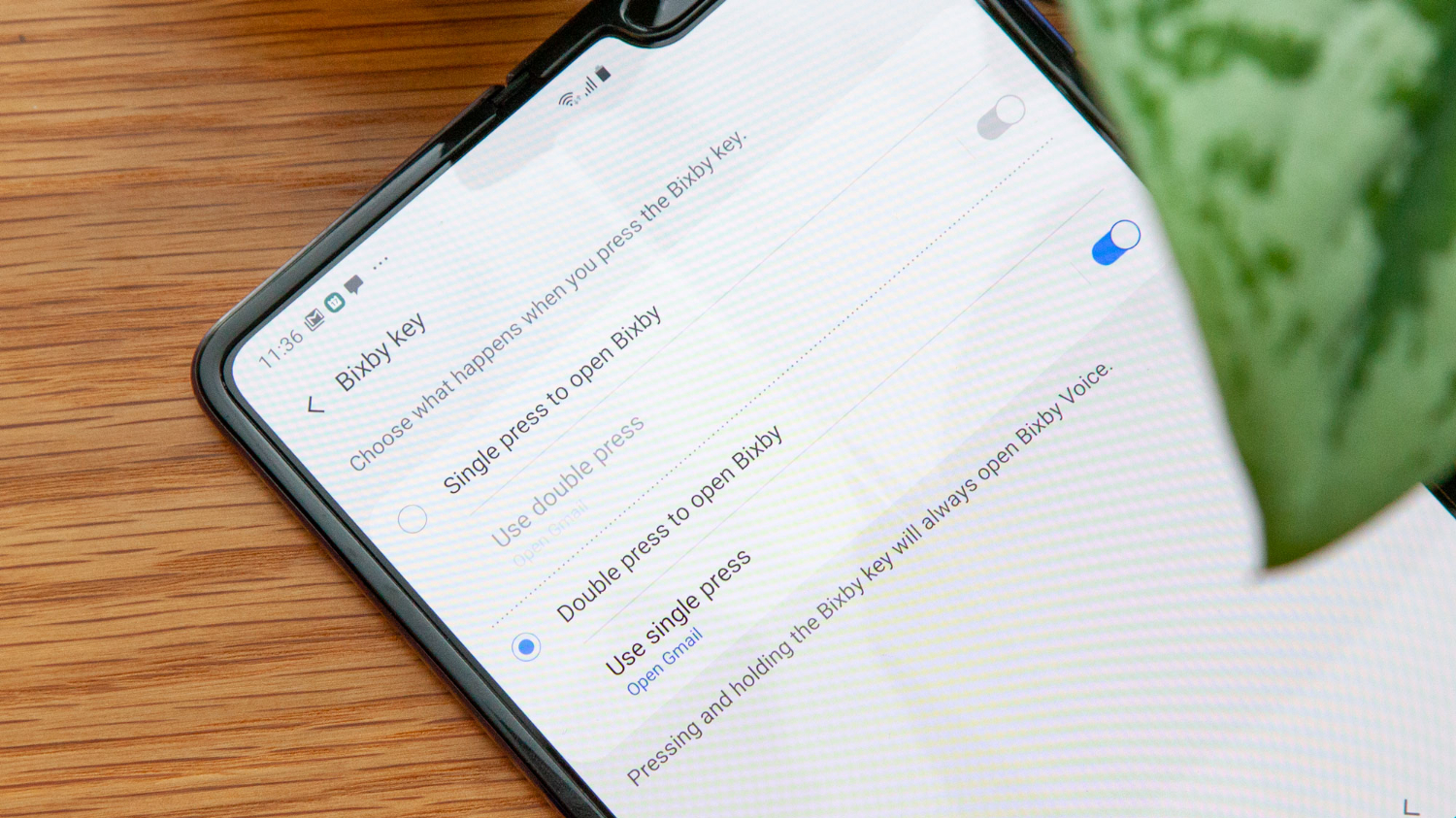
By default, a single press opens the Bixby app, but you can dig into the settings and change it so that you can open another app with a double press. Alternatively, you can have another app open with a single press and relegate Bixby to a double press.
Bottom line
So far I like the Galaxy Fold a lot more than I thought I would. Watching movies, composing emails and playing games just feels more satisfying on this huge screen. It reminds me of the jump from standard smartphones to phablets with the original Galaxy Note. The difference here is that you can fold it all up when you don’t need the big display.
The problem is that the reports of Galaxy Fold screen breaking or flickering raises serious durability concerns for a first-of-its-kind product. That alone should give those who can afford the Fold pause.
The rest of us will hopefully benefit from what Samsung learns from this first effort as it rolls out more foldable phones in all shapes and sizes.
Credit: Tom's Guide
Sign up to get the BEST of Tom's Guide direct to your inbox.
Get instant access to breaking news, the hottest reviews, great deals and helpful tips.
Mark Spoonauer is the global editor in chief of Tom's Guide and has covered technology for over 20 years. In addition to overseeing the direction of Tom's Guide, Mark specializes in covering all things mobile, having reviewed dozens of smartphones and other gadgets. He has spoken at key industry events and appears regularly on TV to discuss the latest trends, including Cheddar, Fox Business and other outlets. Mark was previously editor in chief of Laptop Mag, and his work has appeared in Wired, Popular Science and Inc. Follow him on Twitter at @mspoonauer.

